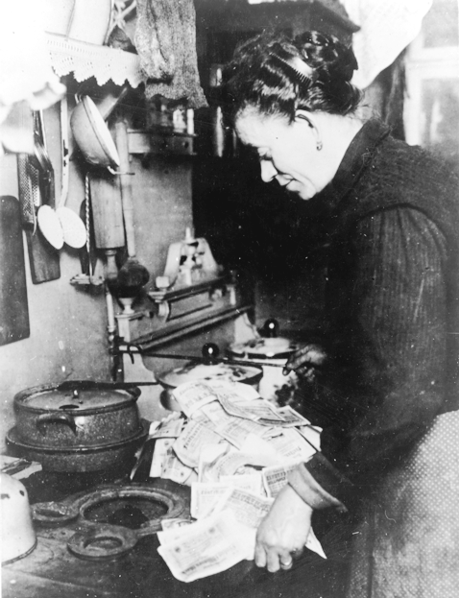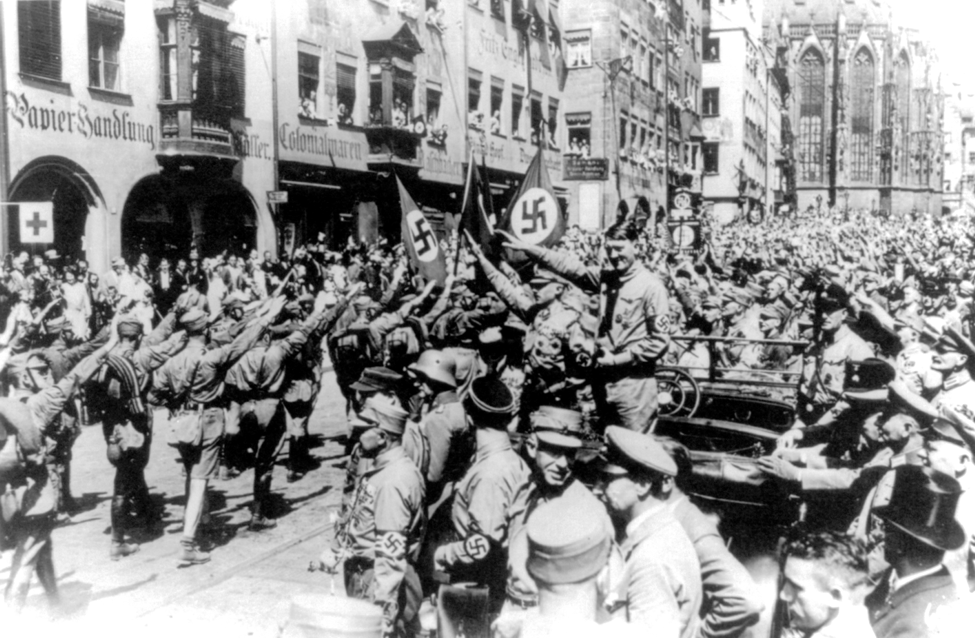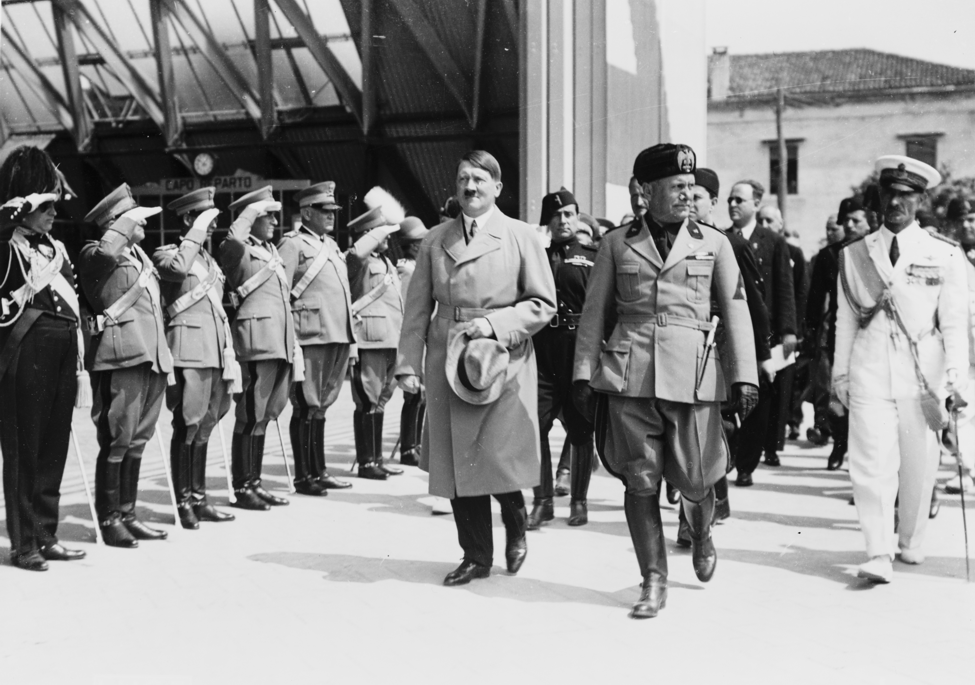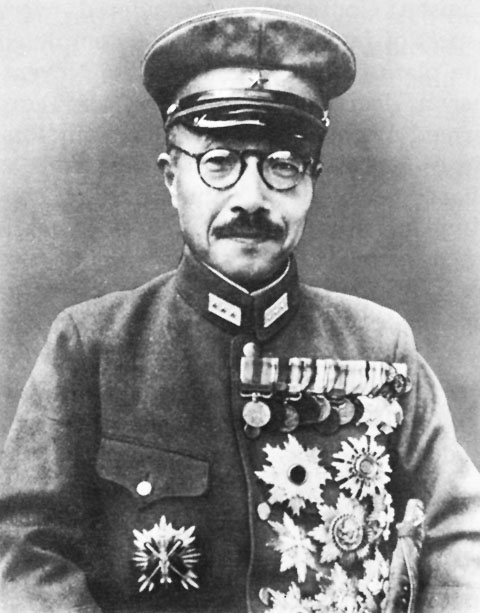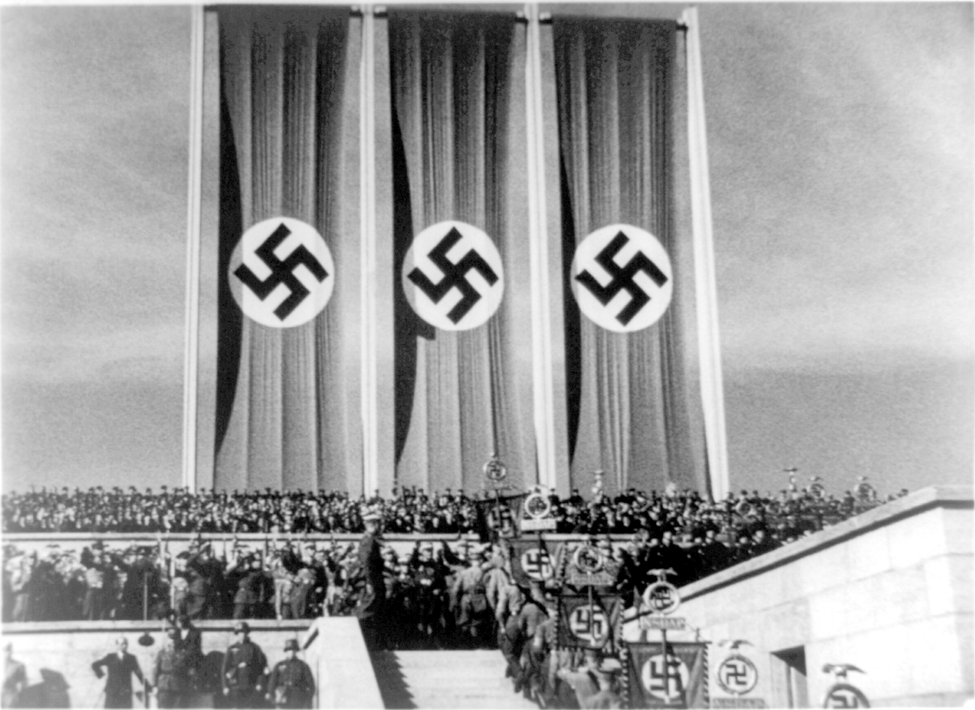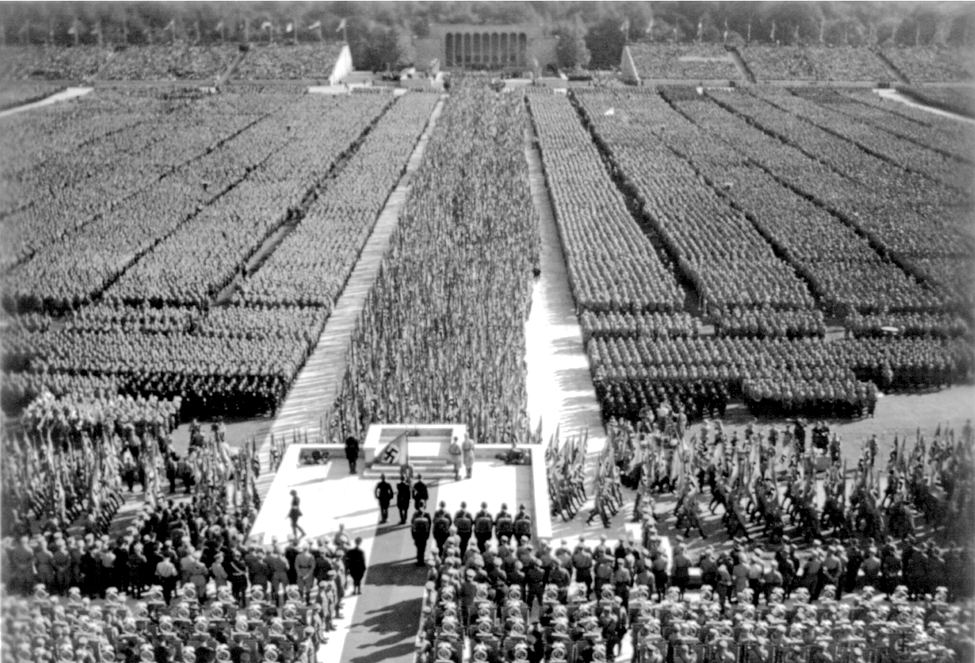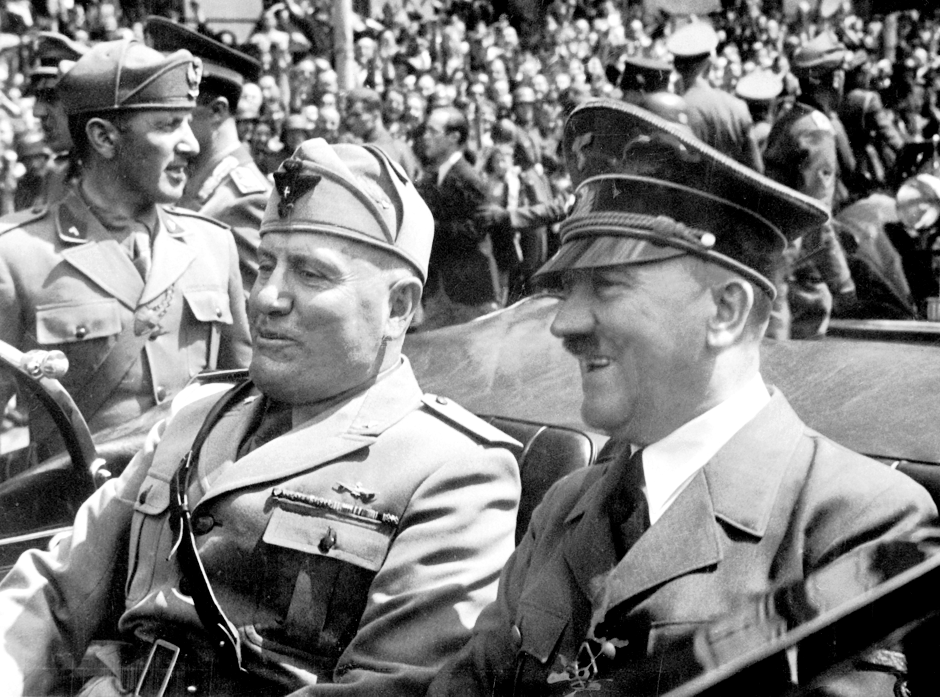devastation in Europe after World War I
|
Example:
Massive
unemployment and
a world-wide depression The end of World War I in 1918 led to a depression (an economic downturn) all across Europe. Many businesses and factories closed, and there were not enough jobs. In the 1930s, the same economic depression that hit the U.S. also affected countries in Europe, especially Germany and Italy. Once again, there were millions of unemployed people and businesses were going bankrupt. Below: A street scene in Germany in 1919. A woman carries milk pails with a wooden yoke across her shoulders while two men, perhaps looking for work, walk down the street. |
|
Example: Germany's war debt The
treaty that ended World War I, called the Treaty of Versailles, required
Germany to pay the Allied Powers billions of dollars for the
damage the war caused.
This war debt hurt Germany badly, and made it difficult for the economy to get back to normal. At the same time, most Germans considered this requirement grossly unfair. A deep and long lasting anger against France, Great Britain, and the other Allies was the natural result. The payments Germany was required to make to the Allied Powers are usually referred to as reparations or reparations payments. The term reparations means payments to make up for damage that one has caused. |
